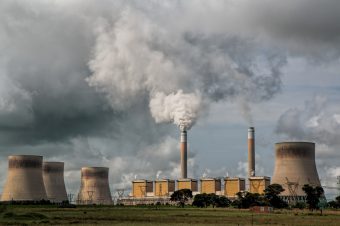
China is at risk of wasting almost half a trillion dollars on new coal plants which could quickly become stranded assets as a result of the country’s pursuit of a lower carbon economy.
That is the conclusion of a new report from the Carbon Tracker think tank, which analyses China’s 13th Five Year Plan (13 FYP) from 2016 to 2020 and argues an anticipated slowdown in the rate of growth for power demand and increased low carbon capacity targets mean the country no longer needs the new coal powered stations currently in the pipeline.
Even existing capacity may come under financial pressure by 2020, as power market reforms and carbon pricing come into force, the report added.
The report said the weak outlook for coal power will be exacerbated by the falling growth in power demand, from a historical average of 10 per cent per annum to an expected three per cent or less per year. Add the imminent introduction of China’s national Emissions Trading Scheme (ETS) in 2017, and margins for coal plants are expected to be eroded still further.
As of July this year, 2,689 of China’s coal plants – with a combined capacity of 895GW – were utilised less than half the time. But despite these poor market conditions and ongoing concerns about air pollution, China still has a further 205GW of coal capacity currently under construction and 405GW more planned for the future.
The total construction cost of the project pipeline reaches $490bn, the report said, but the use of these plants once compleated is inconsistent with the wider goals of the 13 FYP.
“It is clear that China is coming to terms with the fact it does not need any more coal capacity in a market where existing plants are not even running half the time,” said Matthew Gray, senior analyst and author of the report, in a statement. “The dynamic policy environment suggests China is trying to work out how to avoid wasting half a trillion dollars on unneeded coal plants.”
The report concludes China could in fact avoid building any additional coal plants by marginally increasing the utilisation of its existing coal power fleet. After 2032, even this existing fleet becomes inconsistent with a 2C scenario, meaning plants will need to either be fitted with Carbon Capture and Storage (CCS) or retired prematurely.
Rather than pouring capital into “increasingly unviable coal plants”, putting the financial system under additional pressure from the risk of large-scale defaults, the authors urge for China to “act with conviction” to contain its coal overcapacity crisis by promoting energy efficiency measures instead.
James Leaton, Carbon Tracker’s head of research, said there are “clear signs” Chinese coal generation is peaking, adding that the expected increases in hydro, wind, solar, gas, nuclear and biomass capacity under the 13 FYP will be sufficient to meet lower than previously expected demand in power demand.
He added that the trends could also impact the wider global coal industry. “This can only spell bad news for exporters betting on China propping up the seaborne thermal coal market in the future,” he said.
Source: businessgreen.com



